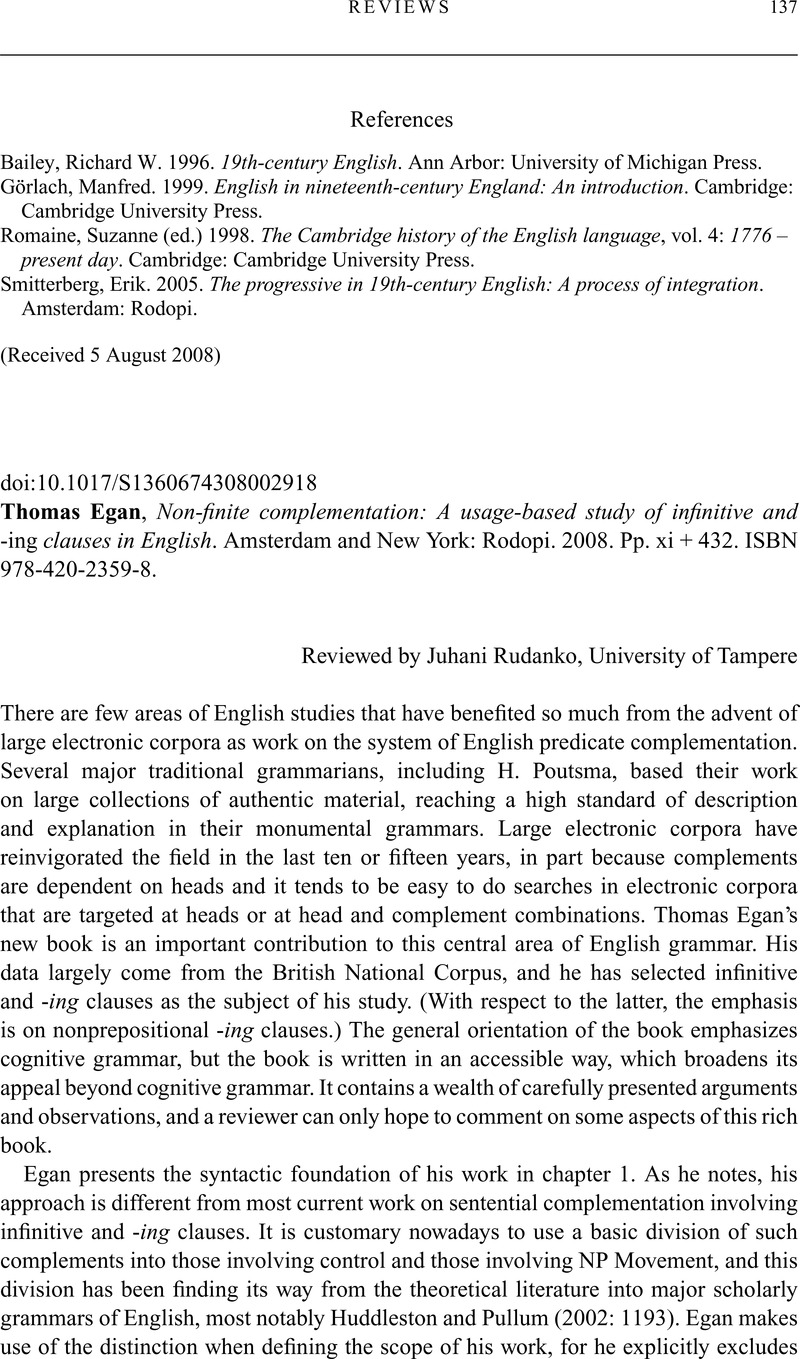No CrossRef data available.
Article contents
Thomas Egan, Non-finite complementation: A usage-based study of infinitive and -ing clauses in English. Amsterdam and New York: Rodopi. 2008. Pp. xi + 432. ISBN 978-420-2359-8.
Published online by Cambridge University Press: 01 March 2009
Abstract
An abstract is not available for this content so a preview has been provided. Please use the Get access link above for information on how to access this content.

- Type
- Reviews
- Information
- Copyright
- Copyright © Cambridge University Press 2009
References
Denison, D. 1998. Syntax. In Romaine, S. (ed.), The Cambridge history of the English language, vol. 4: 1776–1997. Cambridge: Cambridge University Press.Google Scholar
Huddleston, R. & Pullum, G. K.. 2002. The Cambridge grammar of the English language. Cambridge: Cambridge University Press.CrossRefGoogle Scholar
Quirk, R. et al. 1985. A comprehensive grammar of the English language. London: Longman.Google Scholar
Rudanko, J. 1989. Complementation and case grammar. Albany, NY: State University of New York Press.Google Scholar
Rudanko, J. 1998. To infinitive and to -ing complements: A look at some matrix verbs in Late Modern English and later. English Studies 79, 336–48.CrossRefGoogle Scholar
Rudanko, J. 2000. Corpora and complementation. Lanham, MD: University Press of America.Google Scholar
Rudanko, J. 2006. Watching English grammar change: A case study on complement selection in British and American English. English Language and Linguistics 10, 31–48.CrossRefGoogle Scholar




